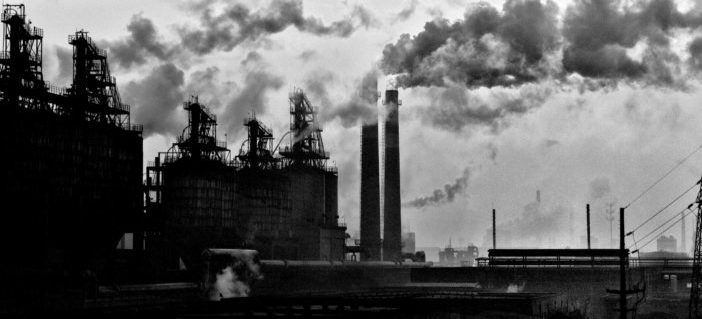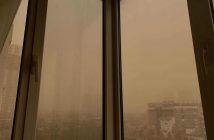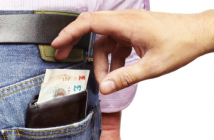However much we love our adopted home, there’s one aspect of Beijing that it’s hard to feel good about: air pollution. Around the world smog has become associated with Beijing, as synonymous with the city as the Mausoleum of Mao Zedong or the CCTV Building. For many people moving here, it’s the first thing their friends and family will ask about.
Yet some twenty million people live here, their day to day lives largely unaffected. While we can hope for clearer skies in the future, for now air pollution is just something to work around, like the traffic and the crowds, part of the price of living in one of the world’s great cities.
To separate fact from fiction, we talked to Dr. Richard Saint Cyr. Dr. Saint Cyr, who practices medicine at Beijing United Family Hospital (BJU), was a health columnist for beijingkids for many years and continues to write about health and wellness in China on his blog, My Health Beijing.
How much of a problem is air pollution in Beijing? Who should be concerned?
Air pollution in Beijing is quite high, even when the air seems to be clear. It is most concerning for people who stay here for many years, but it’s also a potential issue for those who are already sick or vulnerable, such as small children or the elderly, or people with chronic heart and lung disease.
Are kids more affected by air pollution than adults?
There is concern that air pollution can cause permanent damage to a child’s lungs, which continue to develop until around age 18. The best studies so far are from California and show that higher air pollution causes a decrease in lung function, which can last into adulthood. The good news is that studies also show that moving to a cleaner area can improve lung function. Air pollution is also considered harmful to pregnant women and their unborn babies.
What is PM2.5? What is PM10?
PM2.5 simply means “particulate matter” of 2.5 microns, and PM10 is larger at 10 microns. We worry more about the PM2.5, as these particles are so small that we can breathe them in deeply and they get absorbed into our bodies via the lungs. These particles can come from many sources, especially from coal burning, emissions, construction sites, and factories.
What is China doing to address air pollution?
China is taking enormous steps to control air pollution, but the problem itself is enormous. It’s estimated to take at least 15 years before Beijing’s air approaches any meaningfully-improved levels that would be considered healthy. The goal is to get PM2.5 under 10 ug/m3, and Beijing’s air currently is around 86 ug/m3. We have a long way to go!
To keep track of daily pollution levels, get into the habit of checking the US Embassy Twitter feed (@BeijingAir), which provides hourly readings of PM 2.5 levels from the roof of the US Embassy in Liangmaqiao. Keep in mind that these readings may not be accurate for other parts of the city, but they do provide a reliable snapshot of the air quality in central Beijing. The Beijing Municipal Environmental Monitoring Center also publishes its own air quality readings (zx.bjmemc.com.cn) from 27 different monitoring stations across the city.
The most convenient way to stay up-to-date on daily AQI readings is through apps. iPhone users can download the free app China Air Quality Index by Fresh Ideas, which provides data not only for Beijing but a number of other cities in China. Android users can download the Beijing Air Quality widget.
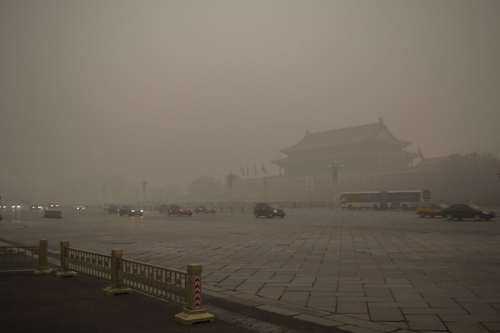
Face masks
Dr. Saint Cyr says:
Masks are reasonable any time you’re outside for more than a few minutes and the air is bad, especially an AQI over 200. Many do work but many do not, so it’s important to stick to masks that have government certifications like N95, N99, KN95, and FFP2 or 3. The fit is also crucial, especially for kids’ smaller faces. If you can feel air leaking around the edges, then it’s not fitting well enough. If it does fit well, then indeed it can decrease your exposure to PM2.5 by 95 percent or more. When in doubt as to brands, just stick with 3M; they’ve been proven effective for decades with government certifications across the world, they’re cheap, and are available in many places, including 7-Eleven.
Masks are divided into disposable and reusable types varying widely by material, cost, and style. Recurring brands include 3M, Respro, Vogmask, and Totobobo. The US-based company 3M makes disposable N95 masks that have proven popular despite their rather “surgical” appearance; they can be a bit awkward for those who wear glasses, but conform to a number of international standards. Each mask costs RMB 10-30 depending on the model. They can be found at select supermarkets and convenience stores like April Gourmet and 7-Eleven, as well as websites like Amazon China (z.cn) and Taobao (www.taobao.com)
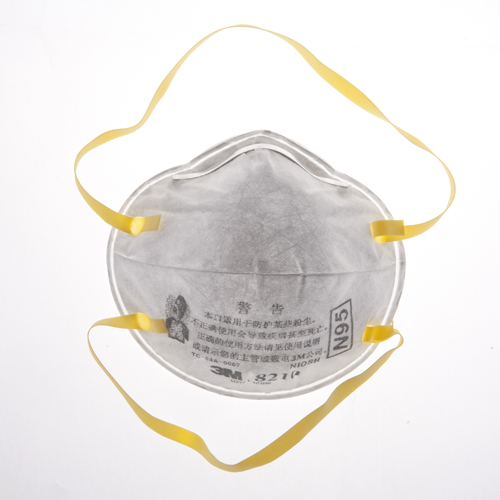
Respro masks are easily recognizable by their “Darth Vader” aesthetic, with replaceable charcoal filters and two external valves. They’re popular with cyclists, though the close-fitting design tends to be uncomfortable for longer rides and hot days. The Techno (RMB 399) and Sportsta Tech (RMB 429) models are available at any of the websites listed above and Natooke, a fixed-gear bike shop in Wudaoying Hutong. The friendly staff can advise you on the best model for your needs. Two-packs of filters are also available RMB 259.
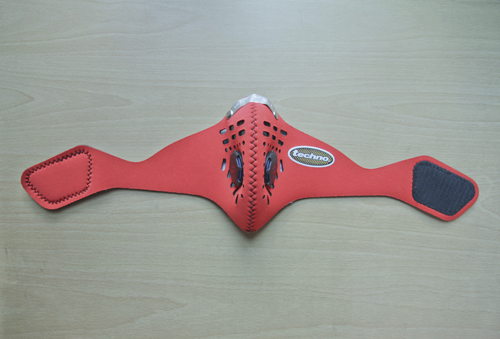
Vogmask produces comfortable microfiber and organic cotton masks containing HEPA filters in four sizes: XS (ages 1-2), S (ages 3-7), M (ages 8-12), and L (adult). However, the child sizes are often out of stock due to high demand. There are numerous styles with patterns inspired by animals, flowers, classic arcade games, contemporary art movements, and even particle physics. Vogmasks cost RMB 225 at the time of print and can be bought at Torana Clean Air Center. The store also carries RZ Masks (RMB 198), which are similar in appearance to Respro masks.
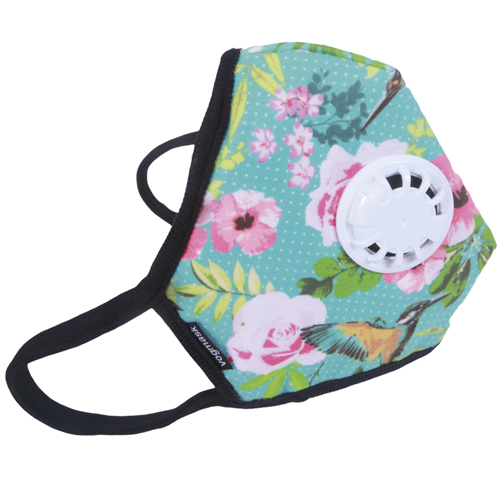
Totobobo masks are made in Singapore and consist of a lightweight, transparent material called SoftTech. They also feature replaceable filters (RMB 126-236 per pack) and can be trimmed to fit kids 5 and over. Both the Classic, which covers the nose and mouth, and SuperCool, which covers the mouth only, are available on TMall (totobobo.tmall.com) for RMB 208. Cyclists may find the SuperCool model comfortable in hot weather, as condensation tends to form within the full mask during times of physical exertion.
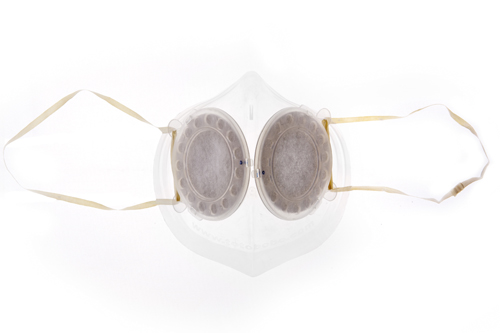
When you come home at the end of the day and shut the door to the outside world, you still can’t be certain that the air you’re breathing is safe. Even the most modern buildings will only keep out half of PM2.5, and there are numerous other pollutants which might be lurking unseen.
Indoor pollution
Dr. Saint Cyr says:
Families should focus on making their indoor air as clean as possible, and this inevitably means air purification. Everyone’s goal should be getting their indoor air PM2.5 under 10 micrograms per cubic meter of air (ug/m3), which is equivalent to an AQI under 50 – the ‘green zone’ of healthy air, according to the US Environmental Protection Agency (EPA) and the World Health Organization (WHO).
When should families use air purifiers?
I personally think that, in Beijing, every family should use air purifiers always, every day, all year round. It’s so rare that Beijing’s air is under AQI 50 for even a few hours, you simply need to get air purifiers, keep the windows closed, and keep the machines on 24 hours a day. They work extremely well, but only if you’ve correctly assessed how many machines you need and what speed you need to keep them on. At the very least, every child should have an air purifier in their bedroom.
What factors should you consider before buying a purifier?
Before buying, you really need to assess your needs, which means measuring the room area and volume and figuring out what’s the total flow rate you need; every room needs five circulations per hour for effective cleaning.
With this information, it’s much easier to see which machines or combination of machines can cover your needs. Don’t forget that advertised flow rates, often [expressed]as Clean Air Delivery Rate or CADR, only apply to the machine’s fastest speed, which is almost never what you’d actually use in everyday use, [most likely]due to loud noise at this setting. The quieter settings will have a lower flow rate, but you won’t see that in most ads; a simple rule of thumb is to cut the CADR in half as a more reasonable expectation of what that machine can do for you.
As you can see, buying a purifier can be very confusing, especially if you have a big house, so you may be better off hiring an environmental assessment team and getting their input.
If you’re worried about brands, don’t fall into the trap of only buying expensive imported air purifiers. Plenty of HEPA-certified local brands work just as well and cost far less than many famous models. All you need is a strong fan with a good HEPA filter. If you want to test your investment, just buy a PM2.5 particle monitor and see how well they are working.
Are green plants useful for addressing air pollution at home?
Green plants look nice and do absorb a bit of air pollution as well as provide oxygen. But the amounts are so tiny that it’s not a proper solution to tackling air pollution anywhere in China – at least not by itself. All HEPA-rated air purifiers perform much better than any plant.
If you’re concerned about indoor pollution, companies such as PureLiving will come to your home and test the air. After the test, a full report is produced with the most pressing issues to be tackled and a list of recommendations.
Factors that might affect the health and safety conditions of your home include the location, housing type, and age of the building. When you move in, ask your agent, landlord, or management office for a history of the home, including the year it was built, the date it was last renovated, and materials used to build the house; this will make the testing process much easier.
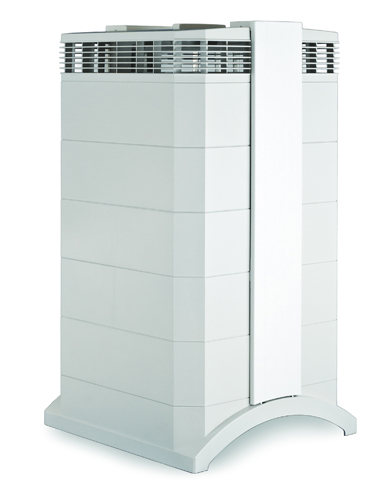
Air Purifiers for the Home
There’s a dizzying array of indoor filtration options, with a similarly broad range of price tags to match. Many families are willing to spare no expense to invest in imported air purifiers such as HealthPro, Blueair (distributed by Torana Clean Air Center), Alen Air (distributed by Renaud Air), and Oransi. Expect to pay between RMB 3,000 to 25,000 per unit depending on the size, model, and surface area you’d like to filter. When deciding on an air purifier model, factors include brand, surface area of your home, and extra features such as UV-C lights to kill mold and yeast.
There are much cheaper air purifier models, mostly made by domestic manufacturers like Yadu that can be found at supermarkets and electronics chains like Gome, Dazhong, and Suning. However, keep in mind that foreign brands are more likely to have undergone rigorous testing for their purifiers and passed product safety standards.
And then, there are upstarts like Smart Air, a social enterprise that champions low-cost DIY air filters and puts on regular workshops to help Beijing residents build their own air purifiers. Kits – which are consist of a fan, a HEPA filter, and a strap – are available on Smart Air’s website for RMB 200 or RMB 468 depending on the fan strength. The enterprise’s experiments with DIY filters are backed up with hard data on their website (see Resources).
Common Indoor Pollutants
Lead
Lead is a naturally occurring element that can be toxic to humans and animals when ingested or inhaled. It’s particularly harmful to children, who are vulnerable to impairments in their neurological development. Common sources of lead include paint, ceramics, pipes and plumbing materials, toys, solders, gasoline, batteries, ammunition, and cosmetics. Lead exposure is one of the foremost causes of child mortality in China. Kids are at a higher risk of absorbing lead, as they may touch objects containing lead; ingest foods or drinks containing lead; use plates or glasses containing lead; inhale dust from lead-based paint or lead-contaminated soil; or play with toys containing lead.
Volatile Organic Compounds (VOCs)
VOCs are a group of odorless, carbon-based chemicals that evaporate quickly at room temperature. Indoor environments usually count up to ten times higher levels of VOCs than outdoors. VOCs are given off by thousands of products, including paints and lacquers, paint strippers, cleaning products, pesticides, building materials, furnishings, printers, corrector fluid, glues and adhesives, and permanent markers. This can cause long-term damage to the liver, kidneys, and central nervous system. Some VOCs are known carcinogens.
Formaldehyde
Formaldehyde is a type of VOC considered by the US National Toxicology Program to be a “known human carcinogen.” It can be found in building materials such as plywood, paneling, pressed-wood products, and urea formaldehyde foam insulation (UFFI), a type of resin used in adhesives, finishes, and medium-density fiberboard. UFFI was banned in the US and Canada in the mid 1980s due to concerns over formaldehyde vapor. In Beijing, however, some homes still contain UFFI and pose a serious health concern for families.
Carbon Dioxide (CO2)
Carbon dioxide is a colorless, odorless gas occurring both naturally and as a result of human activities such as burning gasoline, coal, oil, and wood. Indoors, CO2 levels are dependent on the number of people in the house, how long an area has been occupied, the amount of fresh air circulating in the area from outdoors, the size of the room or area, and whether combustion by-products are contaminating indoor air (e.g. idling vehicles near air intakes, leaky furnaces, tobacco smoke). When there is too much CO2, the lack of oxygen can cause reduced organ function and permanent damage to the brain and heart.
Particulate and Allergens
Air pollution is made up of various components; among them is particulate matter, which is commonly referred to as PM. Particles that are 10 micrometers in diameter or smaller can pass through the throat and nose then enter the lungs. PM can still be found indoors, as leaving windows and doors open over a prolonged period of time can lead to buildup. Dust mites, animal dander, and even cockroaches can trigger allergic reactions for sufferers of asthma and other chronic respiratory diseases. If possible, use a vacuum cleaner with a HEPA filter; a regular vacuum cleaner is likely to spit particulate matter and allergens back out.
Mold
Outdoors, molds play an important part in the natural cycle by breaking down dead organic matter such as fallen leaves and dead trees. Indoors, however, mold growth is to be avoided. Molds reproduce by means of tiny spores; the spores are invisible to the naked eye and float through the air. Mold may begin growing indoors when spores land on moist surfaces, increasing the likelihood of respiratory diseases for both adults and children.
Radon
Radon is a colorless, odorless gas found in nearly all soil types and that seeps in from underground. When inhaled, it gives off radioactive particles that can damage the cells lining the lung; in fact, radon is the number one cause of lung cancer among non-smokers. It can be found in both old and new houses, well-insulated or drafty, with or without a basement. Radon can enter homes via pathways such as openings in floor caulking and sealants around pipes. Built-up air pressure between the foundation of the building and the soil can also cause radon to be drawn into the house. There is also some concern over marble and granite, which are mined from the soil and contain trace amounts of radioactive elements called Naturally Occurring Radioactive Mineral (NORMs). The latter can emit measurable amounts of radiation and radon gas, but this depends on where the granite or marble was mined.
Resources
• Vogmask: 400 650 1253, info@vogmask.cn, vogmask.cn
• HealthPro: 400 650 1266, www.iqair-china.com/en
• Torana Clean Air Center: 8459 0785, 8590 0511,
6597 9986, toranabeijing@163.com, www.toranacleanair.com
• Renaud Air: 400 820 2791, www.renaudair.cn
• Oransi: 400 665 9677, www.oransi.cn
• Smart Air: info@smartairfilters.com, smartairfilters.com
• Pure Living: 6500 8058, www.purelivingchina.com

Dr. Richard Saint Cyr
Originally from the US, Dr. Richard (as we know him) graduated with a Bachelor’s degree in English from Columbia University before turning to the field of medicine. He has lived in Beijing since 2007 and wrote for beijingkids for many years. He and his wife have a son, Alex, who is almost 2. Find more of Dr. Richard’s writing at www.myhealthbeijing.com.
Photo: Bernhard Wintersperger (Flickr), Stevenzhang1221 (Flickr), Sui and courtesy of Vogmask and Healthpro
This article originally appeared on pages 27 and 31 of the 2016 Home and Relocation Guide. Click here for your free online copy. To find out how you can obtain a hard copy, contact distribution@truerun.com.

